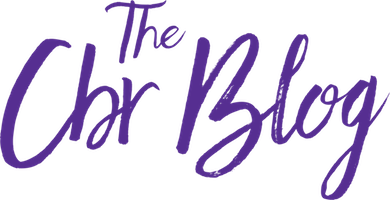When speaking to Cathy Pell, mother of five, one quickly realizes they’re in the presence of a trailblazer. Willing to talk to anybody about the science and research of newborn stem cells, she’s one of the most impressive advocates for cord blood and regenerative medicine around.
Which makes sense, considering her daughter, Abby, was the first person ever to receive a cord blood infusion for an experimental regenerative application. And it was all because of Cathy’s curiosity and courage to jump into the unknown, coupled with the expertise of a pioneering transplant doctor.
Abby’s Diagnosis
In 1996, when Cathy Pell was pregnant with her second son, she saw a special about cord blood on television. But it wouldn’t be until years later, when she was pregnant with her daughter Abby, that she decided to preserve cord blood with Cord Blood Registry (CBR).
“We decided to bank it, in case one of our other children got some condition that cord blood could help treat,” she says. “We didn’t think that Abby might need to use it one day.”
Unfortunately, due to unforeseen circumstances, Abby suffered brain damage at birth that affected her vision and mobility. Although Cathy started vision and other therapies for Abby right away, doctors were unsure how much could be done to improve her condition.
Another Chance for Help
Out of curiosity, Cathy began investigating cord blood and its potential uses. After discovering that it might have the potential to one day help treat brain damage, she began calling hospitals around the country to see if there was an opportunity for her daughter to use her stored cord blood in an experimental application.
Because the procedure was experimental, it would be difficult to find someone. At the time, cord blood had been used for decades as part of a stem cell transplant. Using cord blood for a regenerative medicine application, however, had never been done before and would require an experienced doctor and proper regulatory oversight.
Finally, after many phone calls and conversations with doctors across the U.S. (and even the UK), Cathy was referred to Dr. Joanne Kurtzberg at Duke University, a transplant physician who was interested in studying cord blood in regenerative applications.
To her surprise, Dr. Kurtzberg was ready and willing to spearhead the initiative. Cathy began working with CBR’s team, who safely shipped the cord blood unit to Duke.
The Big Day Arrives
On February 15, 2005, Abby had her first infusion of her own cord blood, becoming the first person to use their own cord blood as part of an experimental therapy for anoxic brain injury.
She also became the first person anywhere (and the first CBR client) to use their cord blood in any regenerative therapy! Fun Fact: more than 80% of the 500+ samples used by CBR families were used for experimental medicine applications.
“The infusion only lasted about twenty minutes,” Cathy says. “You’d think the process was going to be this big deal, but all it was an IV and sitting there until it was over.”
Cathy Reports Progress
Research is still in early stages, so we cannot prove that cord blood stem cells were responsible for Abby’s improvement. However, Cathy says she and Abby’s vision therapist did notice meaningful, though anecdotal, changes.
“Before the infusions,” she says, “Abby would only look to the right or left of something, never right at it. Vision therapy had been difficult because it always had to be very dark and quiet in order to work with her.”
But two weeks after the infusion, while Cathy was giving her a bath, Abby locked eyes with her for the first time. “They were such happy tears,” Cathy recalls.
For the first time, Abby not only began tracking objects but also became alert for their entire one-hour sessions. Prior to the infusions, Abby could only tolerate fifteen minutes of therapy.
As for follow-up results? Two years after their infusion, Abby and Cathy returned to Duke. Their follow-up MRI showed visible improvements over the previous scan taken when Abby was three months old!
Abby Continues to Improve
Abby recently turned fifteen years old, and is mobile with the help of a walker. She loves to ride horses with the help of volunteers, and swimming with her therapist.
What’s on the horizon for the Pell family?
Cathy, as always, is looking ahead to the potential future of newborn stem cells. In fact, a small part of Abby’s cord blood unit was retained in the hopes that Dr. Kurtzberg and her team can one day leverage their continued research to provide more treatments for Abby as the science of cord blood advances.
“You only get one shot at preserving,” Cathy says. “I would go back in time and do whatever I could to have banked it for the other four children.”
While she can’t reverse time, she can look ahead to the future. Cathy says when she becomes a grandmother, her family will be preserving cord blood for every child.
Questions about your medical history or how newborn stem cells might help your family? If you’re a CBR client, log into your account to connect to a Certified Genetic Counselor.



I really enjoyed reading your article and look forward to future posts. Thanks for sharing this informative blog with us.